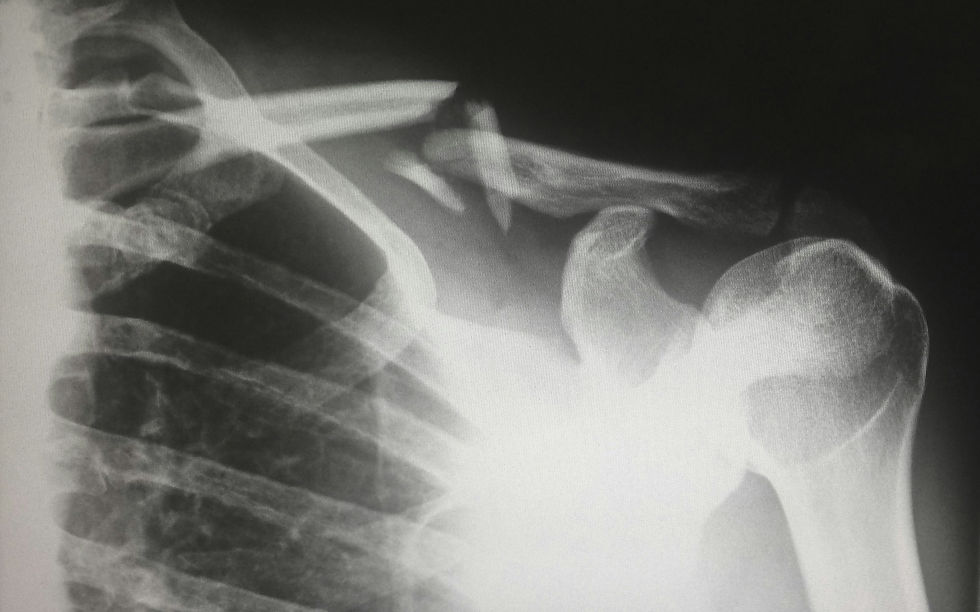Kansas: Tackling The Rural Healthcare Professionals Shortage
- ANATOMY IN CLAY® System

- Dec 28, 2020
- 3 min read
Clelia McCrory first realized something was off when, about two decades ago, she was helping her son with homework from his high-school anatomy class.
“Where is the tibia?” she quizzed him. “Number 7,” he replied. Her son and fellow students were learning the parts of the human body as numbers to be filled out on a worksheet.
McCrory wondered what understanding her son would retain of the tibia, beyond the number assigned to it. “You gotta know what it looks like!” she told him.
Around that same time, McCrory had attended a conference where she saw a demonstration of the Anatomy in Clay® Learning System’s MANIKEN® model. Intrigued at its potential for educational purposes, she ordered one. She then asked to meet with her son’s anatomy teacher.
McCrory had ideas.
The joy and benefit of having a MANIKEN® model in the classroom has been well documented. Anatomical concepts jump off the page, taking three-dimensional form in colorful clay. Students see, build, touch, and identify that which they are learning. They can draw real-life parallels and can differentiate what is on the left and right side of the body.
In the state of Kansas, in a span of around 20 years, and thanks in large part to McCrory, MANIKEN® and TORZIKEN™ models have become a living system that sends its shoots far beyond the classroom.
An early conversation with a hospital administrator brought to the fore another concern for McCrory: “The dire need for health care workers” in rural areas. Rural hospitals were struggling to retain workers that provided quality care. Recruitment and incentives were low and turnover in these positions was high.
Why? Because a “typical American lives 18 miles from Mom,” McCrory says. Health care workers in rural areas can be classified into three categories: 1) foreign-born; 2) from a rural area; and 3) because they desire a location with less accountability.
McCrory’s research corroborated what she saw on the ground. According to the Kansas Department of Labor, health care workers numbered 175,500 in 2008. The agency projected the need for 213,800 workers in 2018—an increase of more than 35,000. How would that need be met?
In Kansas, there are 283 school districts. At the same time her son was writing “#7” on anatomy work sheets, only seven school districts had Health-Science Pathways, programs that provided a professional segue from high school to employment. Of the seven districts, only one was in a non-metro area.
McCrory thought to herself, How can I grow a rural doctor?
The answer: you write a grant!
Fast-forward to 2020: Kansas has 143 school districts with Health-Science pathways. These pathways have unlocked access to the federal Perkins grant, which enable the funds necessary to bring the Anatomy in Clay® Learning System into the classrooms. The thinking is that if you engage students in hands-on learning opportunities, not only will students retain the information better, but the very act of engaging will spark an interest in a career.
That was true for Dr. Mark Reed, a Kansas native who, after leaving for medical school, returned to work as a physician in Reno County. It was also true for Kim Dillard, a licensed physical therapist in the area. McCory job-coached a student that went on to become a local charge nurse. These are a just a few examples that came out of one school district in Kansas — a small dot on the map.
The common thread? These health care professionals all took a high-school class that featured Anatomy in Clay® MANIKEN® models.
Pharmacist, Emergency Medical Technician, even Robotics or Information Technology — these are some of the many offshoots that the Anatomy in Clay® Learning System can spawn over time. In Kansas, its reach grows statewide, yet it has the power to remain local. Over the past 20 years, The Anatomy in Clay® Learning System has created a bona fide feedback cycle, helping develop professionals who go on to help develop their communities.
Says Mrs. McCrory: “when you have someone that lives in your county, that makes a huge difference in the quality of your physical therapy… because they have a vested interest in that county.”
And there is no reason to limit this phenomenon to Kansas. The Perkins Reserve Grant is federal (any state can apply). Do you have a hospital, nursing home, or community center nearby? What is your local school district? What are some community or statewide foundations? These all serve as potential partners. Education, health care, business industries don’t have to be separate sectors; they can be interconnected.
As for Mrs. McCrory? At the age of 64, she has helped implement Health-Science pathways in over half of Kansas’s school districts. “By the age of 70, my goal is to have all school districts” with these pathways, she says.
She knows it is ambitious, but she is not stopping.
Thank you, Clelia!
To listen to Clelia McCrory discuss these issues, listen to the Anatomy in Clay® Learning System podcast here.





Comments